
JOURNAL OF ASSISTED REPRODUCTION AND GENETICS
Scope & Guideline
Elevating Standards in Assisted Reproductive Technologies
Introduction
Aims and Scopes
- Advancements in Assisted Reproductive Technologies (ART):
The journal publishes research on the latest techniques in ART, including in vitro fertilization (IVF), intracytoplasmic sperm injection (ICSI), and embryo cryopreservation, with a focus on improving clinical outcomes. - Genetic Testing and Counseling:
There is a strong emphasis on preimplantation genetic testing (PGT) for aneuploidy and monogenic disorders, including discussions on genetic screening protocols and their implications for patient counseling. - Fertility Preservation:
Research on fertility preservation strategies for cancer patients and other populations at risk of infertility is a key area of focus, addressing both clinical practices and the psychological aspects of decision-making. - Ethical, Legal, and Social Implications (ELSI):
The journal includes discussions on the ethical, legal, and social implications of reproductive technologies, promoting awareness and dialogue on these critical issues. - Interdisciplinary Research:
The journal encourages interdisciplinary studies that integrate reproductive medicine with genetics, molecular biology, and biostatistics, fostering innovative approaches to understanding and addressing infertility.
Trending and Emerging
- Integration of Artificial Intelligence (AI):
There is a growing trend in utilizing AI and machine learning technologies to enhance embryo selection, predict clinical outcomes, and improve laboratory efficiencies, indicating a shift towards data-driven approaches in reproductive medicine. - Focus on Epigenetics and Environmental Factors:
Research exploring the role of epigenetics and environmental influences on fertility and reproductive outcomes is gaining traction, highlighting the complex interplay between genetics and lifestyle. - Patient-Centered Care and Decision-Making:
Emerging themes emphasize the importance of patient perspectives, informed consent, and shared decision-making in fertility preservation and treatment options, reflecting a more holistic approach to reproductive health. - In Vitro Maturation (IVM) Techniques:
There is an increasing interest in IVM as a viable option for fertility preservation and treatment, particularly for women with conditions like polycystic ovary syndrome (PCOS), indicating a shift towards less invasive procedures. - Genomic Medicine in Reproductive Health:
The integration of genomic medicine into reproductive health is on the rise, with research focusing on the genetic basis of infertility, the implications of genetic carrier screening, and advancements in PGT.
Declining or Waning
- Traditional Fertility Treatments:
There is a noticeable decline in publications focused solely on traditional fertility treatments without the integration of genetic testing or advanced technologies, as the field increasingly prioritizes personalized and precision medicine approaches. - Single-Gene Disorders without Broader Context:
Research centered on single-gene disorders affecting fertility is becoming less frequent, with a growing focus on polygenic and multifactorial influences on reproductive health. - Generalized Ethical Discussions:
While ethical considerations are still important, there appears to be a shift away from broad ethical debates towards more specific discussions related to emerging technologies and their direct implications in clinical settings.
Similar Journals

Reproductive Biology and Endocrinology
Fostering Innovation in Reproductive and Endocrine ResearchReproductive Biology and Endocrinology, published by BMC, is a distinguished open-access journal established in 2003, catering to researchers and professionals in the interdisciplinary fields of reproductive biology, endocrinology, and related biomedical sciences. With a notable impact in 2023, the journal has achieved Q1 rankings in Obstetrics and Gynecology, Reproductive Medicine, and Endocrinology, alongside a Q2 ranking in Developmental Biology, establishing itself as a pivotal source of high-quality research and insights. The journal's commitment to freely accessible research promotes knowledge dissemination across its domains, which is crucial for advancing understanding of reproductive health and endocrine mechanisms. With a robust Scopus ranking showcasing its relevance—17th out of 209 in Obstetrics and Gynecology, and 8th out of 90 in Reproductive Medicine—it serves as an essential resource for academics and clinicians alike, facilitating innovative research and fostering collaboration within the global scientific community.

Reproductive Medicine and Biology
Exploring breakthroughs in reproductive science.Reproductive Medicine and Biology, an esteemed journal published by WILEY, stands at the forefront of advancements in the field of reproductive health and associated biological sciences. With an impact factor that underscores its relevance—ranking in Q1 for Reproductive Medicine and Q3 in Cell Biology—this journal is distinguished by its commitment to disseminating high-quality, peer-reviewed research since its transition to Open Access in 2002. Based in Japan, the journal caters to a global audience, providing vital insights into reproductive biology, therapeutics, and innovative practices. With Scopus rankings placing it at #22 out of 90 in Reproductive Medicine and a commendable percentile ranking, Reproductive Medicine and Biology aims to foster dialogue and knowledge transfer among researchers, professionals, and students, paving the way for breakthroughs in understanding reproductive health.
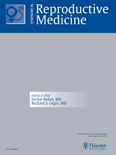
SEMINARS IN REPRODUCTIVE MEDICINE
Advancing the Frontiers of Reproductive HealthSEMINARS IN REPRODUCTIVE MEDICINE is a leading peer-reviewed journal dedicated to exploring the complexities of human reproduction, offering insightful perspectives that encompass advances in reproductive endocrinology, obstetrics, and gynecology. Published by THIEME MEDICAL PUBL INC, this esteemed journal holds a notable spot in multiple Scopus categories, ranking 21st in Reproductive Medicine and 38th in Obstetrics and Gynecology, with an impressive impact in the Q1 and Q2 quartiles. With its commitment to high-quality research and clinical implications, the journal serves as a vital resource for practitioners, researchers, and students alike, fostering an environment of innovation and collaboration in the rapidly evolving reproductive health landscape. SEMINARS IN REPRODUCTIVE MEDICINE also offers convenient open access options, ensuring that its contributions are readily available to the global academic community. For over two decades, from its establishment in 1999 to the present, it has retained a pivotal role in disseminating critical findings that inform both clinical practice and future research efforts.
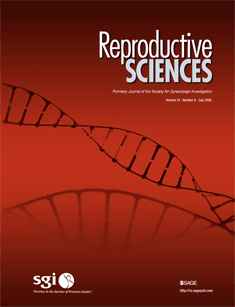
Reproductive Sciences
Exploring the Frontiers of Reproductive SciencesReproductive Sciences is a premier journal published by SPRINGER HEIDELBERG, dedicated to the field of obstetrics and gynecology. With its ISSN 1933-7191 and E-ISSN 1933-7205, the journal has established itself as a leading source of high-quality research and clinical insights since its inception in 2007, and continues to converge its scope into 2024. Currently ranked in the Q1 category for obstetrics and gynecology, it holds the 43rd position among 209 journals in the Scopus rankings, underscoring its influence and relevance within the medical community. This journal is particularly dedicated to advancing knowledge in reproductive health, providing a platform for innovative research and clinical practices through both traditional and open access options. Located in Switzerland with an address in Heidelberg, Germany, Reproductive Sciences is not just a publication; it is a vital resource for researchers, professionals, and students seeking to make impactful contributions to the field of reproductive health.

Reproductive and Developmental Medicine
Exploring the frontiers of reproductive and developmental medicine.Reproductive and Developmental Medicine is a pioneering open-access journal dedicated to advancing knowledge in the fields of reproductive medicine and developmental biology. Published by LIPPINCOTT WILLIAMS & WILKINS, the journal serves as a platform for researchers, clinicians, and graduate students alike, fostering collaboration and dissemination of innovative research findings. With an ISSN of 2096-2924 and E-ISSN 2589-8728, it has established a significant presence in the academic community since its inception in 2017. The journal is indexed in Scopus and achieved a category quartile ranking of Q3 in Obstetrics and Gynecology and Q4 in Reproductive Medicine as of 2023, highlighting its importance as a resource for cutting-edge studies and reviews in these vital areas. The journal's open-access model ensures that research is readily available to scholars and practitioners worldwide, thus enhancing the global discourse in reproductive health and development. This makes Reproductive and Developmental Medicine an invaluable resource for those dedicated to improving outcomes in obstetrics, gynecology, and reproductive health.
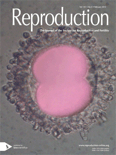
REPRODUCTION
Transforming research into reproductive health breakthroughs.REPRODUCTION, published by BIOSCIENTIFICA LTD, stands at the forefront of research in the fields of reproductive and developmental biology. With a focus on advancing our understanding of reproductive health and mechanisms, the journal has garnered an impressive reputation, consistently ranking in the first quartile for key categories including Embryology, Endocrinology, Obstetrics and Gynecology, and Reproductive Medicine in 2023. Notably, it holds an esteemed position in the Scopus rankings, with high percentiles that reflect its significant impact in the scientific community. The journal is committed to open access, promoting the broad dissemination of high-quality research to facilitate innovative discoveries and interdisciplinary collaboration. Situated in the United Kingdom, REPRODUCTION serves as a vital resource for researchers, professionals, and students eager to contribute to the evolving landscape of reproductive sciences and related fields.
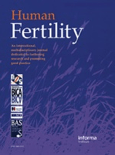
Human Fertility
Connecting Scholars to the Heart of Reproductive MedicineHuman Fertility, published by Taylor & Francis Ltd, is a key academic journal that serves the dynamic fields of medicine, obstetrics and gynecology, and reproductive medicine. Established in 1998 and with converged content extending to 2024, the journal holds a notable Q2 ranking in its respective categories, highlighting its influence and scholarly contributions to current research and practice. With an ISSN of 1464-7273 and an E-ISSN of 1742-8149, it rigorously disseminates studies, reviews, and advancements in human fertility, particularly emphasizing evidence-based practices and innovative techniques. Despite its traditional subscription model, the journal remains vital for researchers, healthcare professionals, and students seeking to foster advancements in reproductive health. Its articles are pivotal in addressing the multifaceted challenges faced in reproductive health and guiding future research trajectories.

Jornal Brasileiro de Reproducao Assistida
Connecting researchers to the forefront of reproductive innovation.Jornal Brasileiro de Reprodução Assistida is a prominent academic journal focusing on the latest advancements in reproductive medicine, published by the Sociedade Brasileira de Reprodução Assistida (SBRA). With an ISSN of 1517-5693 and an E-ISSN of 1518-0557, this journal has established itself as a vital resource for researchers, healthcare professionals, and students in the fields of obstetrics and gynecology. Notably recognized within the Q2 category for Obstetrics and Gynecology, it ranks #91 out of 209 in Scopus, placing it in the 56th percentile among its peers. The journal serves as a platform for disseminating innovative research and clinical practices related to assisted reproduction, fostering collaboration and knowledge sharing among professionals in Brazil and beyond. Although currently not an open-access journal, it remains committed to enhancing the scientific discourse in reproductive health, reflecting its vision of supporting advances in healthcare through rigorous peer-reviewed studies. Explore the pivotal contributions made in this field from 2000 to the present, and stay abreast of transformative developments that are shaping reproductive science.
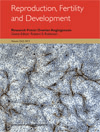
REPRODUCTION FERTILITY AND DEVELOPMENT
Exploring the frontiers of fertility and developmental research.Reproduction, Fertility and Development, published by CSIRO Publishing, is a prestigious journal that has been at the forefront of research in the fields of reproductive science, developmental biology, and related disciplines since its inception in 1989. With an ISSN of 1031-3613 and an E-ISSN of 1448-5990, this journal serves as a vital platform for disseminating innovative findings and methodologies that advance our understanding of reproductive processes and development in a variety of organisms. The journal is indexed in prominent databases, exhibiting a solid standing with a Q3 quartile ranking in both Animal Science and Zoology and Biotechnology, and covering 2023 rankings in multiple related categories. Operating from Australia, Reproduction, Fertility and Development embraces a commitment to enriching scholarly communication and fostering collaborative research efforts. Its focus on high-quality, peer-reviewed articles makes it an essential resource for researchers, professionals, and students seeking to stay abreast of the latest advancements and pivotal discussions in reproductive medicine and developmental biology.

MOLECULAR HUMAN REPRODUCTION
Exploring the Molecular Frontiers of Human ReproductionMOLECULAR HUMAN REPRODUCTION, published by Oxford University Press, is a pivotal journal dedicated to advancing the field of reproductive biology. Since its inception in 1995, the journal has been recognized for its rigorous peer-reviewed research and substantial contributions to the understanding of molecular mechanisms underlying human reproduction. With an impressive impact factor and ranked within the top tiers (Q1 and Q2) across diverse categories including Embryology, Obstetrics and Gynecology, and Reproductive Medicine, it stands as an essential resource for researchers, healthcare professionals, and students alike. The journal aims to publish cutting-edge research that explores the complexities of human reproduction at the molecular and cellular levels, fostering a deeper understanding that can be translated into clinical practice. Although it currently operates under a subscription model, the valuable insights and groundbreaking findings featured within its pages continue to influence the trajectory of reproductive health research globally. Located in the heart of Oxford, United Kingdom, the journal remains committed to addressing vital challenges in the field and promoting innovative scientific dialogue.